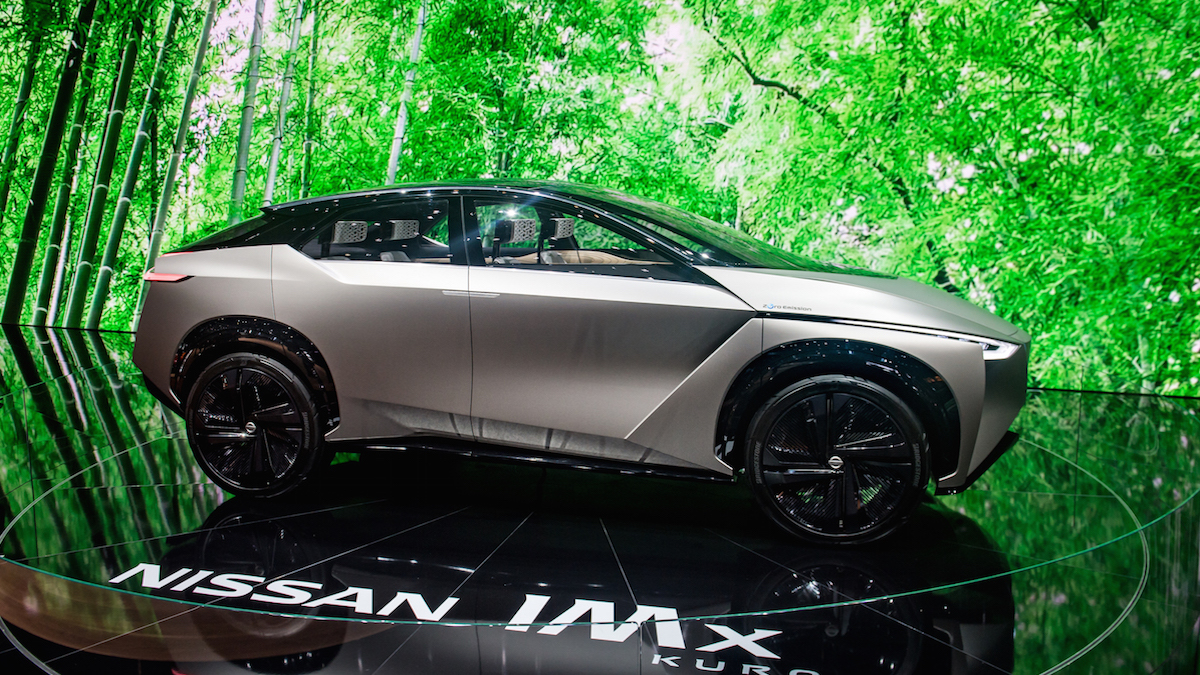Remember when regular electric cars were considered space-age? Today, we don’t bat an eyelid when a Toyota Prius passes us on the road. The cars of tomorrow, on the other hand, really are on a whole other level: think self-driving, zero emissions, 3D mapping, biometric authentication and voice control systems.
These next-gen vehicles will blow your mind.
Mercedes-Benz Concept EQV
View this post on InstagramA post shared by Gorden Wagener (@gorden.wagener) on
Mercedes-Benz previewed its first electric MPV, the Concept EQV, at the Geneva motor show in March 2019. The eight-seater, which is due to go on sale by 2021, has a large central touchscreen and offers the latest version of the MBUX infotainment system, which includes voice and gesture control. It has a 100kWh lithium-ion power pack, capable of delivering a 250-mile range and taking on 60 miles of electricity in just 15 minutes on a public rapid charger.
Toyota Concept-i RIDE
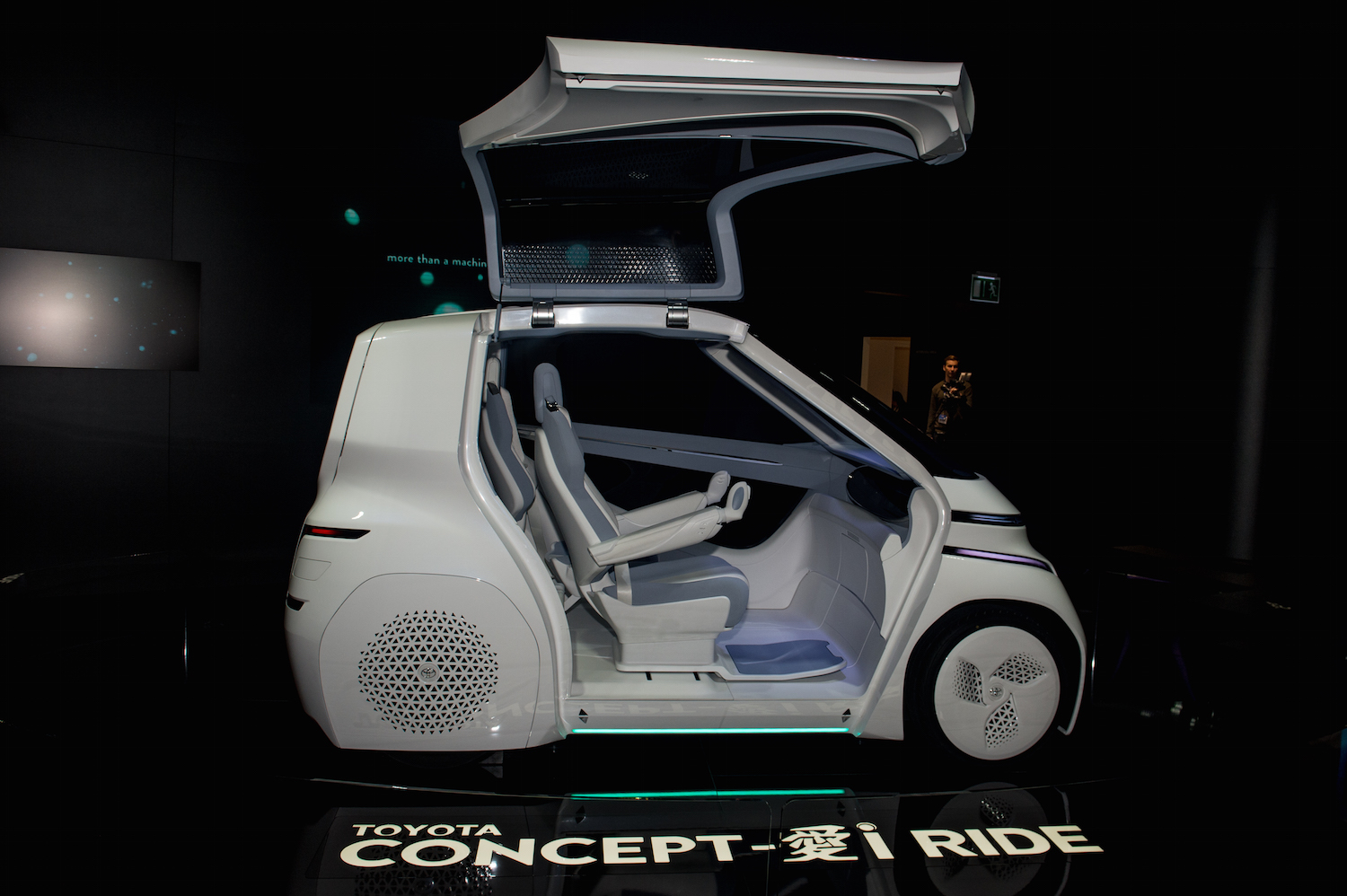
Toyota first introduced its Concept-i series (the Concept-i, Concept-i RIDE and Concept-i WALK) at the 2017 International Consumer Electronics Show (CES) in Las Vegas. Designed with vehicle-sharing and accessibility in mind, the compact Concept-i RIDE has gull-wing doors, universal sliding seats and automated driving functions. It still has a steering wheel — although it looks more like a video game controller — but drivers can rely on the powerful artificial intelligence (AI) “Yui,” described by Toyota as “more pal than interface,” to help them out.
Toyota Concept-i WALK
The Toyota Concept-i WALK lets users travel where cars are denied access. It may look like a Segway (and you do stand up to operate it), but it’s far more sophisticated and compact, and easier to ride. Its advanced technology detects dangers (such as obstacles and holes on the road) and gives warnings, while taking you wherever you want to go at a speed of up to 12 mph.
Honda NeuV
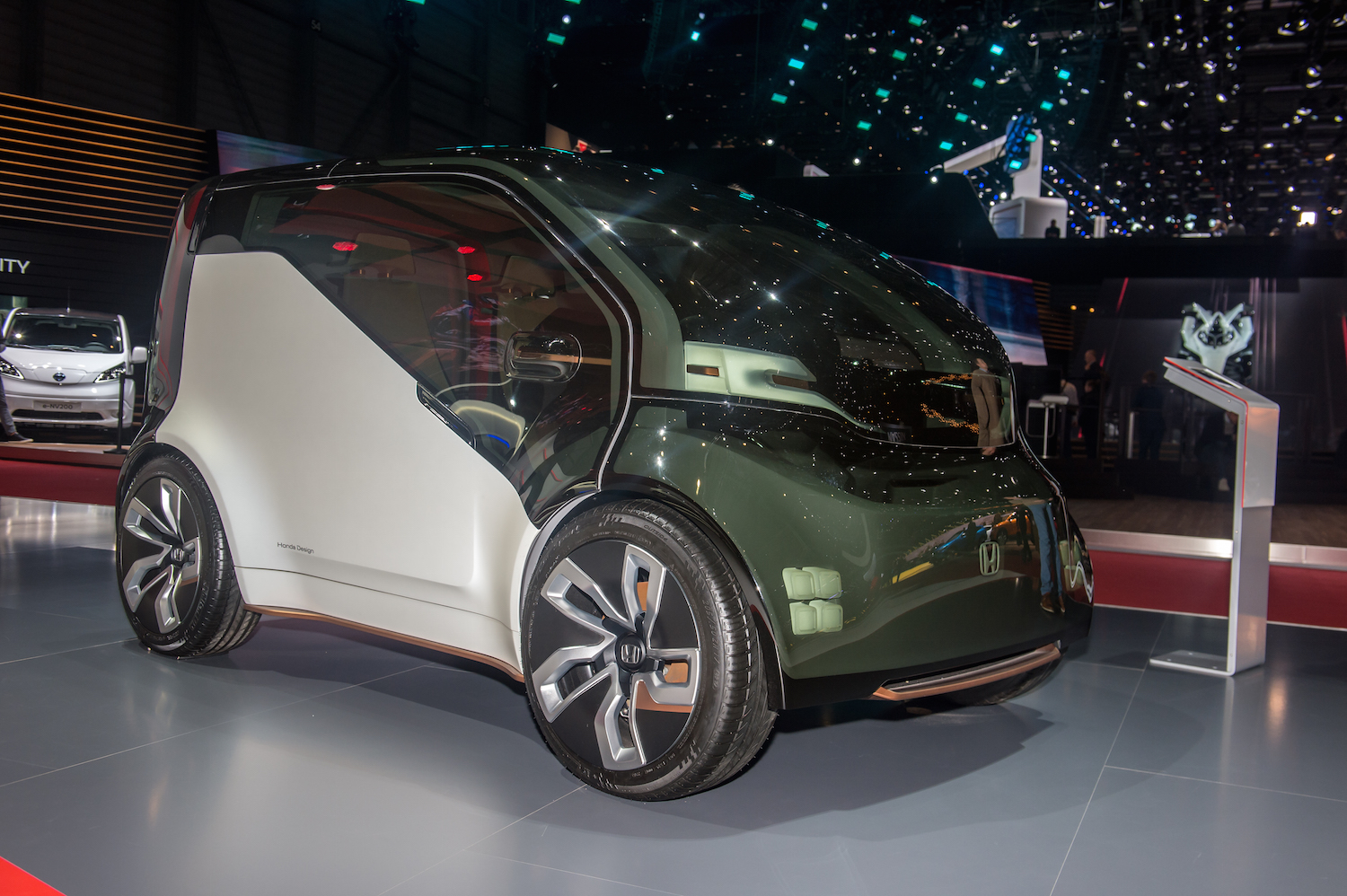
The Honda NeuV (pronounced “new-v”) is an electric mini-car with built-in AI programmed to detect the driver’s emotions and provide help and advice. As well as being a car that cares, it has a touchscreen dashboard and an inbuilt payment system, and sells energy back to the electric grid when it’s not being used. It even comes with an electric skateboard for “last mile” transit.
BMW Vision iNext
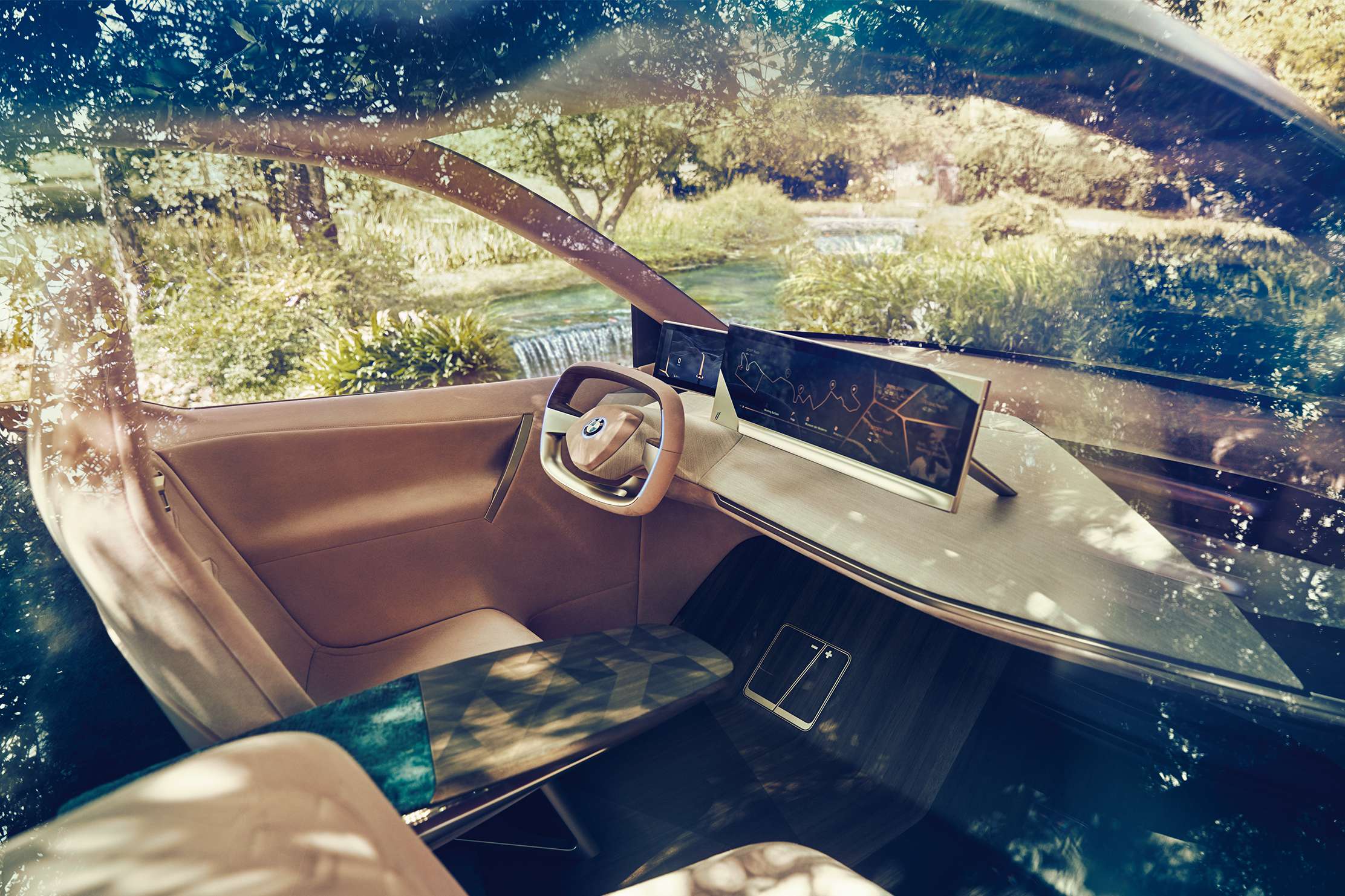
In February 2019, BMW released photos of its Vision iNext undergoing winter testing in Sweden, marking the start of two years of development before its scheduled release in 2021. Hailed as the future of the electric SUV and designed like a living room on wheels, one of its coolest features is its touch-sensitive back-lit fabric, which reacts when you touch it. According to BMW, the Vision iNext will be able to go 400 miles on one charge, which is way more than any current electric car.
Mitsubishi Emirai 4
View this post on InstagramA post shared by MitsubishiElectricUS (@mitsubishielectricus) on
The latest version of the Mitsubishi Emirai 4 made its debut at CES 2019. It’s an all-bells-and-whistles smart-mobility concept car with an augmented reality display, 3D mapping, a half mirror with a diagonal LCD panel to give the driver 3D images of the environment, biometric authentication, smart home and mobile payment integration, and an autonomous mode.
Audi Aicon
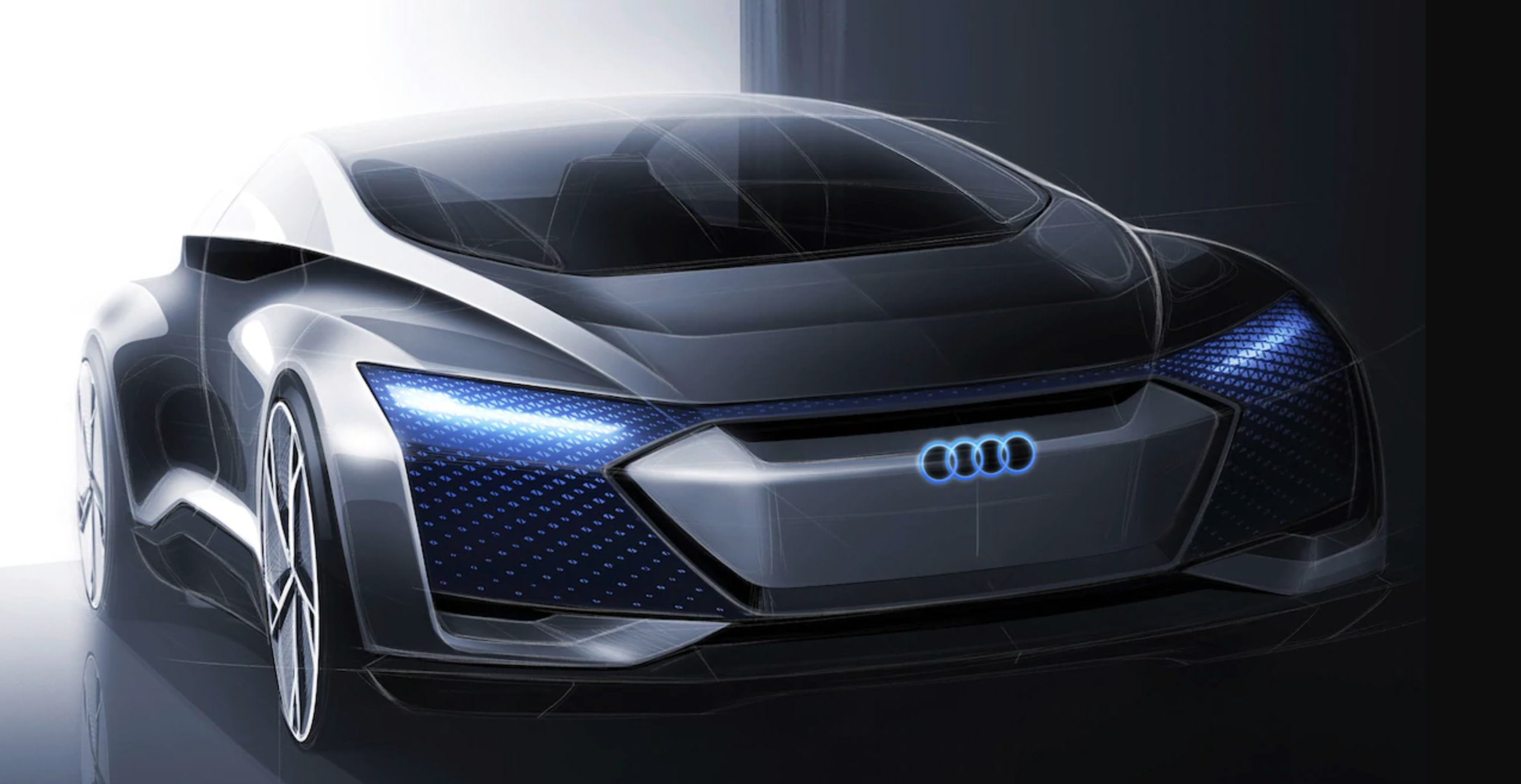
The Audi Aicon impressed on aesthetics alone when it was first unveiled in 2017. The sleek electric autonomous car, which is still a few years away from going into production, has four motors, a range of up to 497 miles per charge, and can charge wirelessly up to 80 percent in less than 30 minutes. The interior is just as stylish and will satisfy fans of the minimal look: it has no visible steering wheel or pedals.
Nissan IMx Kuro
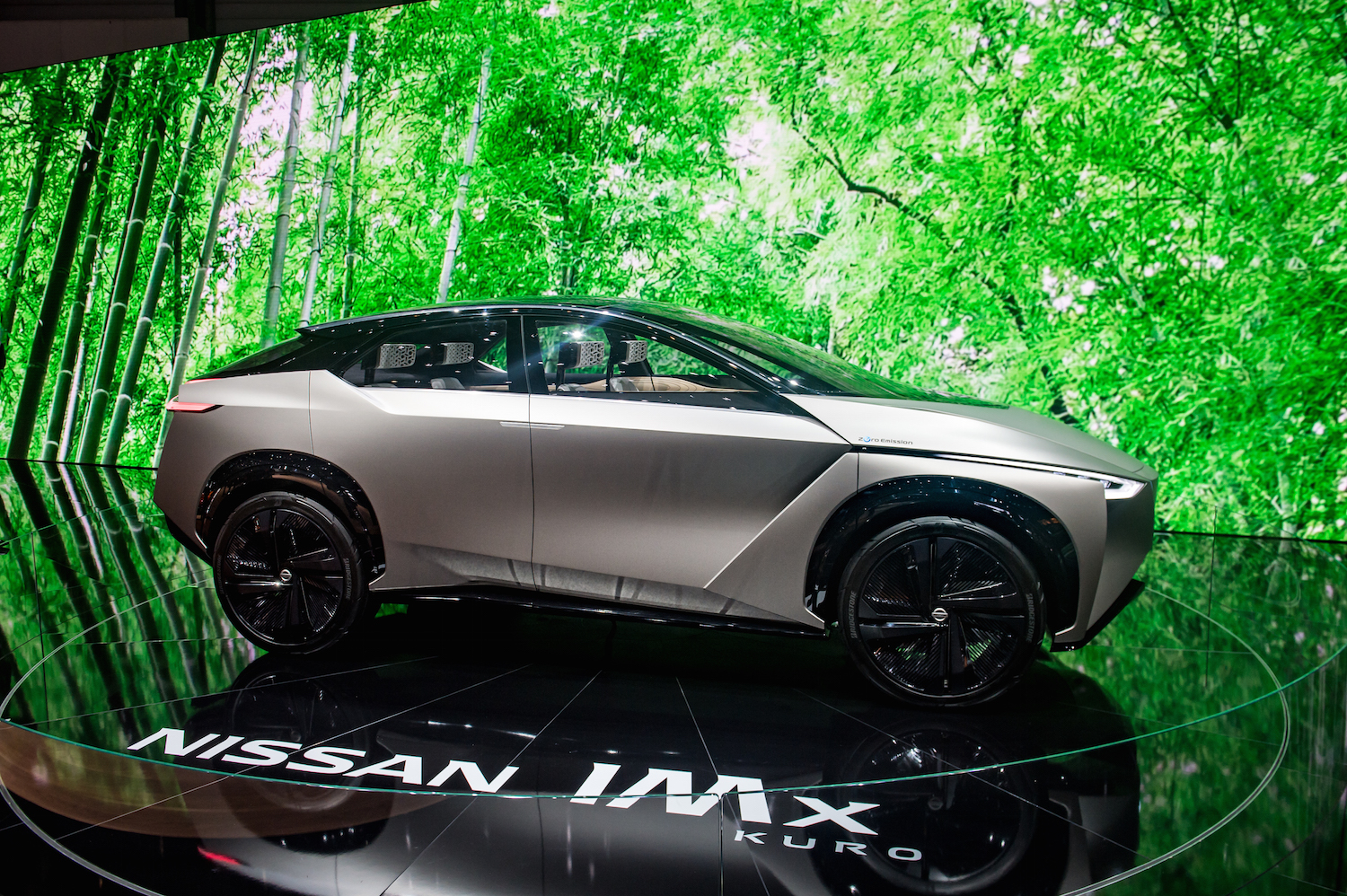
The Nissan IMx Kuro concept vehicle, a fully autonomous electric crossover with zero emissions, was a hit at the 2018 Geneva International Motor Show and is scheduled to go into production sometime in 2020. Nissan’s Brain-to-Vehicle (B2V) technology deciphers signals from the driver’s brain to help with driving and strengthen the link between driver and vehicle. Drivers can choose between manual drive or ProPILOT (fully autonomous) operation, which automatically tucks the steering wheel into the dashboard and reclines all the seats.
Nvidia Drive Autopilot
Nvidia Drive Autopilot isn’t a car but an automated driving system that can be integrated throughout any compatible vehicle. While it’s not actually a full self-driving platform, it offers driver assistance functions, such as parking assist, highway merge, lane change or lane split and pedestrian detection. It can also help with acceleration, braking and steering. At CES 2019, leading automotive suppliers Continental and ZF announced self-driving solutions based on Nvidia Drive, with production starting in 2020.
EDAG Light Cocoon
View this post on InstagramA post shared by M3 MotorCube (@m3motorcube) on
Truly one of a kind, the EDAG Light Cocoon — the “ultimate in future lightweight construction,” according to its German design firm EDAG Engineering — is a fabric-wrapped concept sports car. Its lightweight, 3D-printed, organic outer shell lights up at night for better visibility, while still offering excellent weather protection. Apparently, it was inspired by the patterns on fall leaves. It’s not the only 3D-printed car out there, but it’s the coolest by far — as captured here by the m3motorcube account.
Lamborghini Terzo Millennio
Automobili Lamborghini Spa unveiled its Terzo Millennio (“third millennium”) concept car at the EmTech conference in Cambridge, Massachusetts, in November 2017. Developed in collaboration with the Massachusetts Institute of Technology as part of a three-year, $126.9 million partnership, the Terzo Millennio looks like something out of a superhero movie and will be a truly revolutionary vehicle — its body will be formed of carbon-fiber panels (supercapacitors) to provide the energy the car needs to run.
Byton M-Byte
The autonomous, electric Byton M-Byte is being marketed as “the world’s first Smart intuitive vehicle.” It comes with a 48-inch wide infotainment screen the entire length of the dashboard, a series of cameras and a range of onboard sensors, such as a weighing seat base and wireless wrist band, providing health insights like heart rate, blood pressure and oxygen levels, and offering tips for improving fitness. In June 2019, the very first M-Byte body rolled off the Byton factory body shop in Nanjing, China.
Byton K-Byte
View this post on InstagramA post shared by BYTON (@bytoncars) on
Another exciting future Byton model is the K-Byte, which was publicly unveiled at the 2018 Consumer Electronics Show Asia. Estimated to be on the road in 2021, it will have Level 4 autonomous driving, meaning it can drive without any human control whatsoever. It has “Smart Surfaces” on its front- and rear-ends to create a 3D visual, and unlike other self-driving cars, the K-Byte’s side “LiGuard” sensors retract when it’s in manual mode.
Waymo
Alphabet’s Waymo, formerly the Google self-driving car project (which started in 2009), uses sensors, cameras and AI to detect nearby objects, obstacles and bystanders. A prototype has already been on the road, and an autonomous minivan with Waymo technology, Lidar arrays and a roof camera installation was shown at CES 2019. Waymo One, the company’s self-driving ride-hailing service — like Uber without a driver — is being rolled out in Metro Phoenix to help test the tech.
AeroMobil 4.0
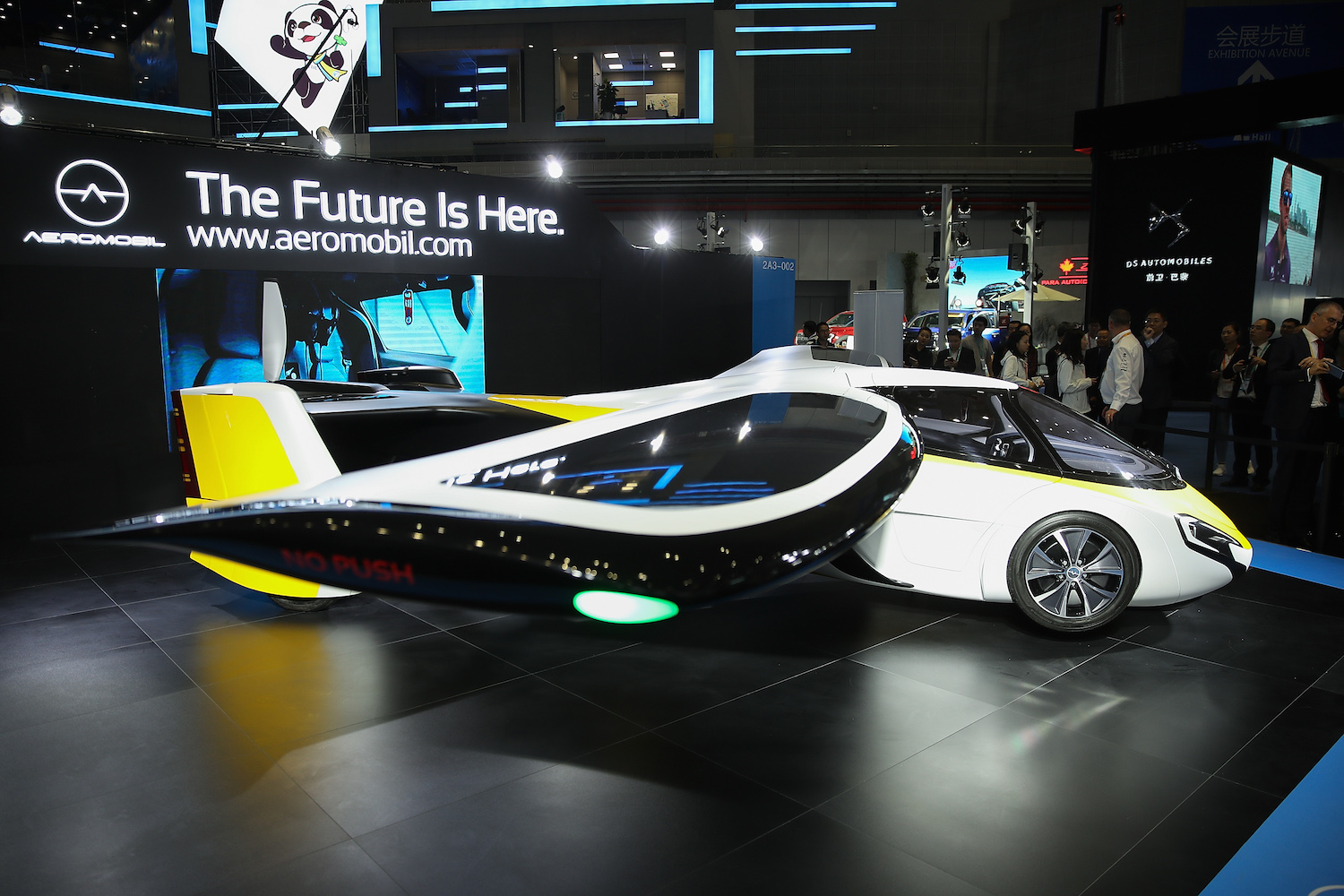
The AeroMobil 4.0, another futuristic plane and car combination that looks like something out of a sci-fi movie, has retractable wings, a propeller in the back and a driver’s seat that’s more like a pilot’s cockpit. The elegant design is inspired by “a perfectly aerodynamic teardrop shape,” and the exterior is constructed of carbon composite construction for optimum strength and aerodynamic performance. It’s available for pre-order — but bear in mind you need a runway for takeoff and a pilot’s license to fly it.
Hyundai Elevate
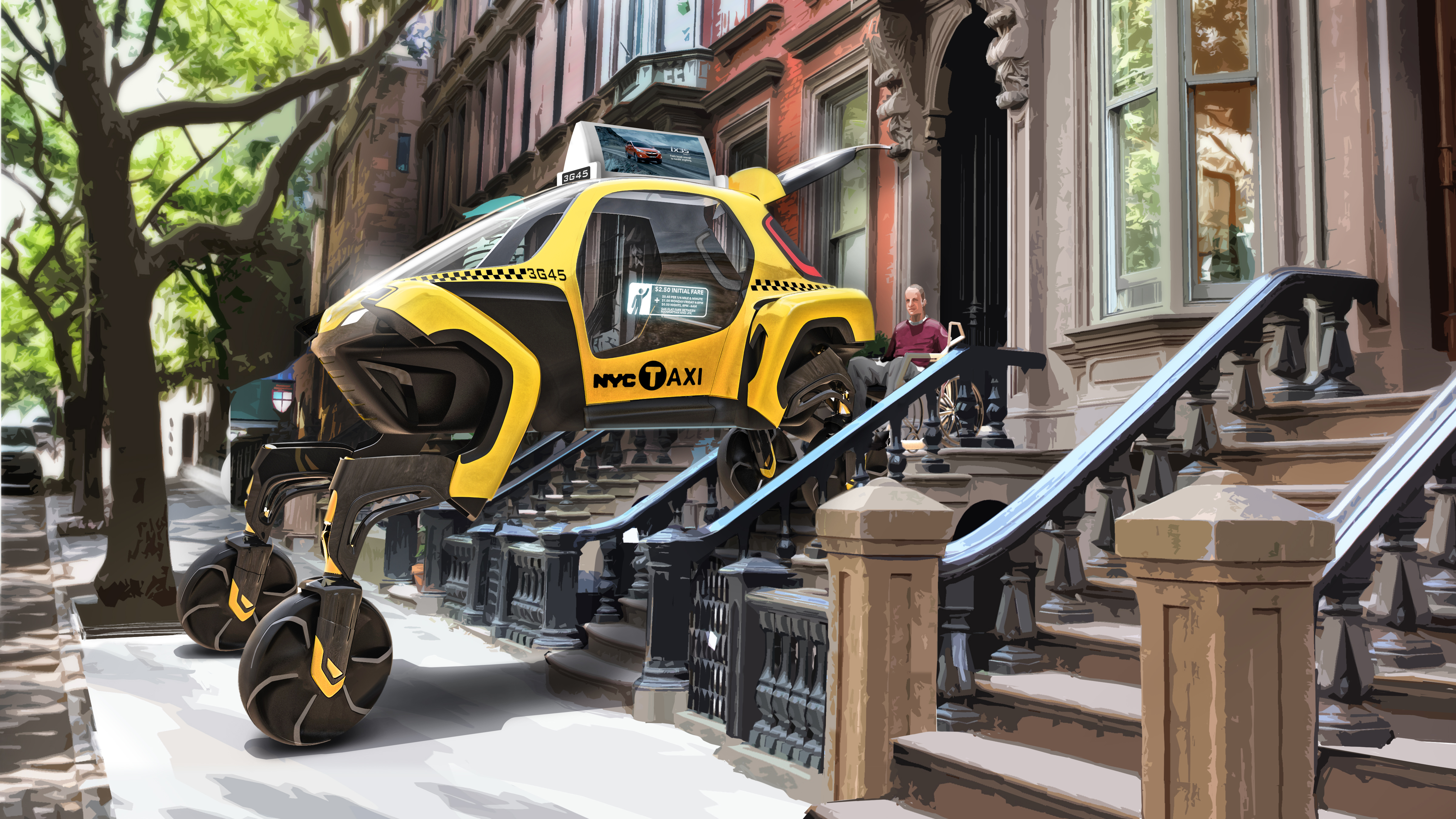
If a flying car doesn’t appeal, how about a walking car? After being in development for three years, the Hyundai Elevate, a veritable real-life Transformer with multiple attachments, created a buzz at CES 2019. The first Ultimate Mobility Vehicle, it has extendable robotic legs to let it overcome obstacles up to 5-feet high or 5-feet wide, combining technology used in electric cars and robots to surpass the potential of every other off-road vehicle.
Mercedes-Benz F 015
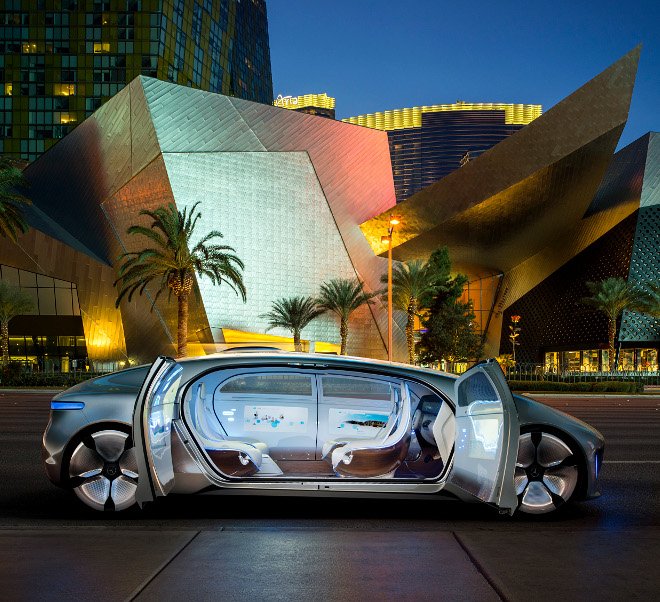
You can’t get much more futuristic than the Mercedes-Benz F 015. It has no steering wheel, a cabin with seats facing each other, and is fully autonomous with a built-in AI system. It’s also incredibly polite; if someone tries to walk in front of it, it stops and says, “Please, go ahead.” The manufacturer describes the F 015’s interior as a “digital living space” — it has six displays to let passengers interact intuitively with the car by motion or touch.
Mercedes-Benz Vision Urbanetic
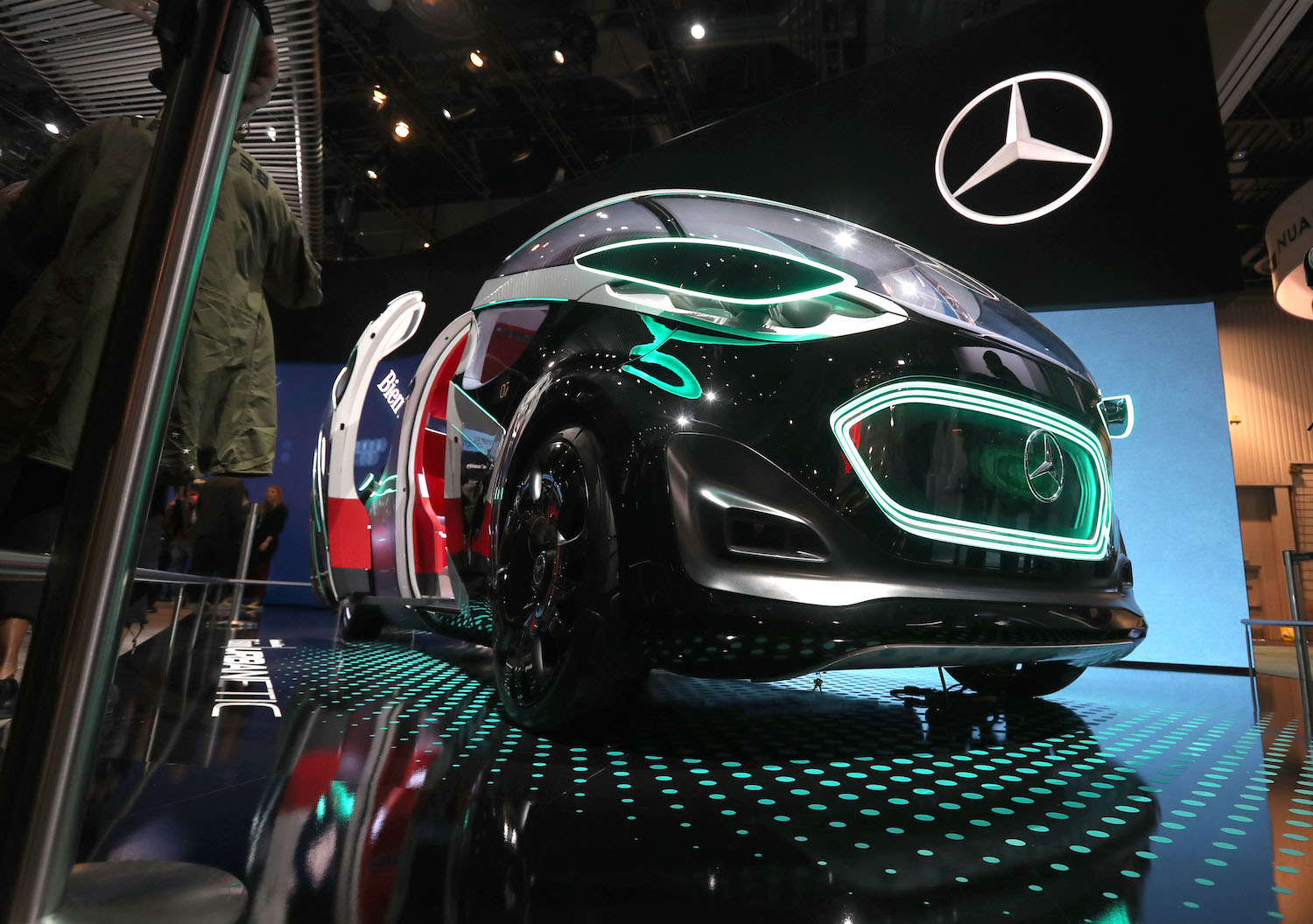
The Mercedes-Benz Vision Urbanetic is based on an electric self-driving concept with a twist. It has switchable bodies, allowing users to choose from a passenger module with room for up to 20 people (eight sitting and four standing) or a multi-level cargo unit to transport goods. In either case, the base of the vehicle does the autonomous driving and stores the electric batteries and motors.
Bosch IoT Shuttle
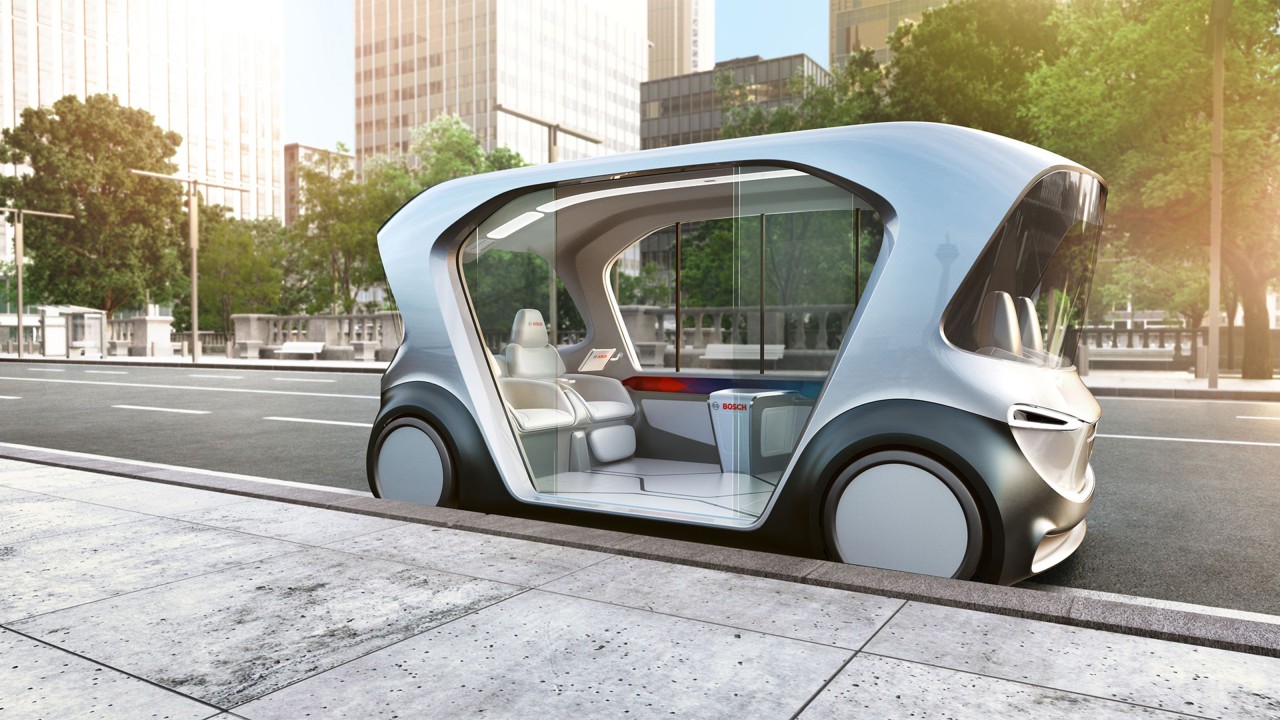
While electronics and engineering company Bosch doesn’t have any immediate plans to make cars, it showcased its Bosch IoT shuttle at CES 2019 to showcase its take on autonomous driving. The shuttle is powered by electric drive axles and uses software designed in-house to reveal remaining battery range and whether battery power is sufficient to reach the next destination; when a shuttle runs low, it is taken out of service and directed to the closest charging station. Bosch predicts that, in 2020, there will be about a million shuttles on the road in Europe, the United States and China, and 2.5 million by 2025.
Harley-Davidson LiveWire
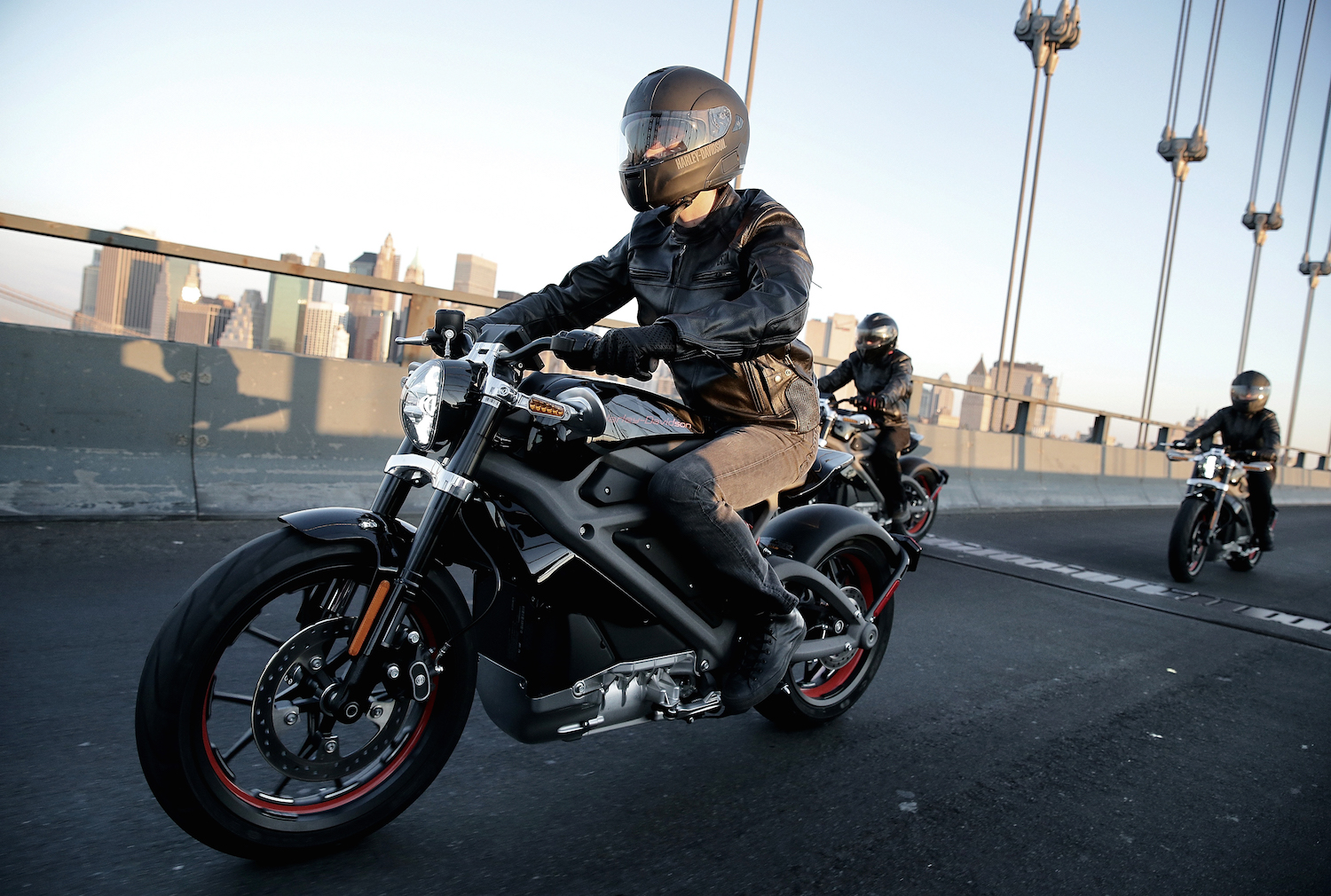
Another big reveal at CES 2019 was a pre-production version of the Harley-Davidson LiveWire, an electric motorcycle with an estimated range of 110 miles on a single charge. Its level of cellular connectivity (transmitting information about motorcycle status, tamper alerts, vehicle location, service reminders, etc.) is a first for mass-market motorcycles. Authorized Harley-Davidson dealers are taking pre-orders for the LiveWire now and anticipate first deliveries in August 2019, with a price tag of $29,799.
Volkswagen ID. Buzz Cargo
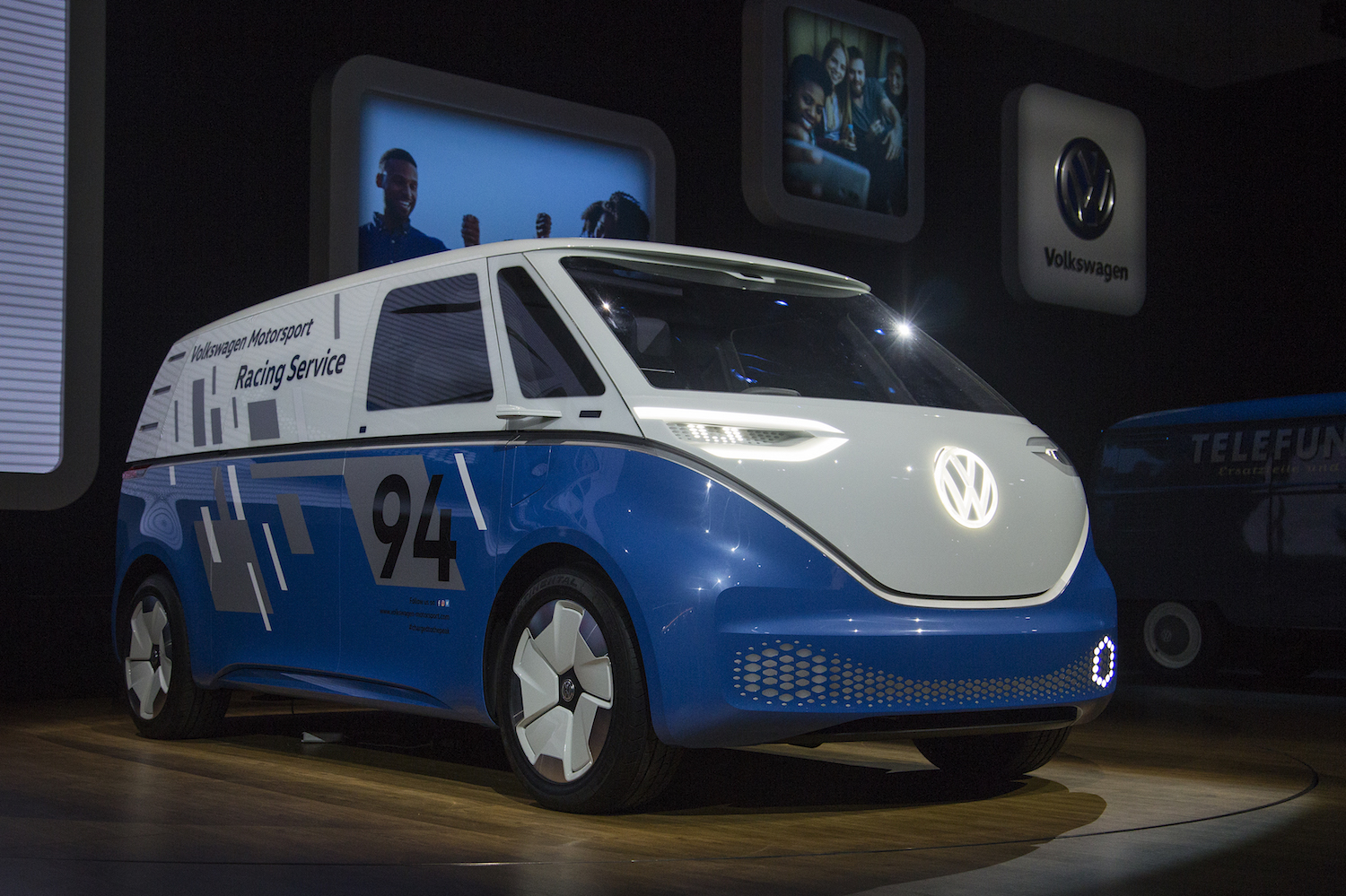
The ID. range is Volkswagen’s contribution to electromobility, and fans of their iconic camper van won’t be left out. The ID. Buzz Cargo is based on the concept of “variable space,” thanks to its innovative interior design that can be a living space or even a creative hub. Augmented navigation keeps you on the right path, and there’s a promise of a fully automated mode, too. There’s no release date yet, but the people at Volkswagen say they’re “working hard to ensure that it’ll be worth the wait.”
Genesis Essentia
The stunning electric coupe Essentia, from Hyundai’s standalone premium brand Genesis, was revealed at the New York Auto Show in 2018 and swiftly named “Concept of the Year” by Automobile magazine. Many concept cars don’t go beyond the concept stage, but the signs are strong that the Essentia — or something based on it — will be the company’s first pure electric vehicle, scheduled to go on sale in 2021.
Bell Nexus Air Taxi
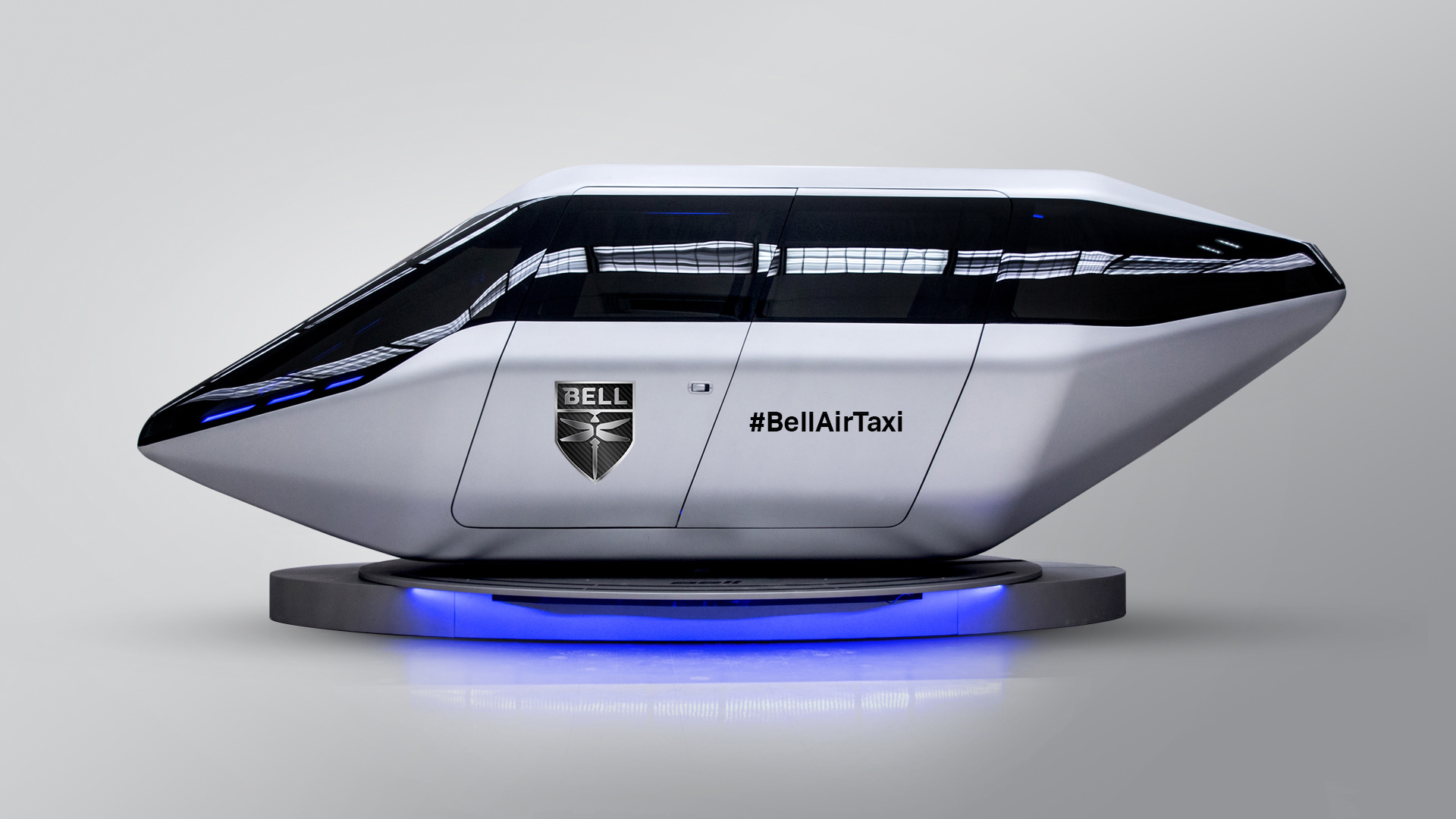
The general consensus is that one of the most thrilling concept vehicles at CES 2019 was the Bell Nexus Air Taxi, a huge flying drone/helicopter hybrid that can seat four and has a range of 150 miles. It’s not a car, but it’s definitely worth knowing about. Described by Bell as “a rideshare in the air,” it’s being tested in Dallas, Dubai and Los Angeles, and may be released as early as 2025.
Terrafugia Transition
View this post on InstagramA post shared by Terrafugia, Inc (@terrafugiainc) on
Who says cars have to keep their wheels on the ground? A new generation of “flying cars” is in development, such as the Terrafugia Transition. It uses powerful propellers to take off vertically, and once in the air can reach a speed of 100 mph.
The two-seater fuels up with automotive gas, can be stored in your home garage and has foldable wings that let you switch easily from drive to fly. After many years in development, the Transition will go on sale later this year, with an estimated price tag of $400,000.
Lotus ‘Type 130’
View this post on InstagramThe first British all-electric hypercar… #lotus
A post shared by Lotus Cars USA (@lotuscarsusa) on
So hush-hush it still goes by the code name “Type 130,” the new fully-electric hypercar from Lotus will be revealed on July 16, 2019, after months of social media teasers featuring only a color (lime green) or an image of the rear charging point cover, and confirmation of only the most basic details. What we do know is that Lotus only intends to build 130 versions of the hypercar, meaning it could sell out before we know more about it.
Sponsored Content

